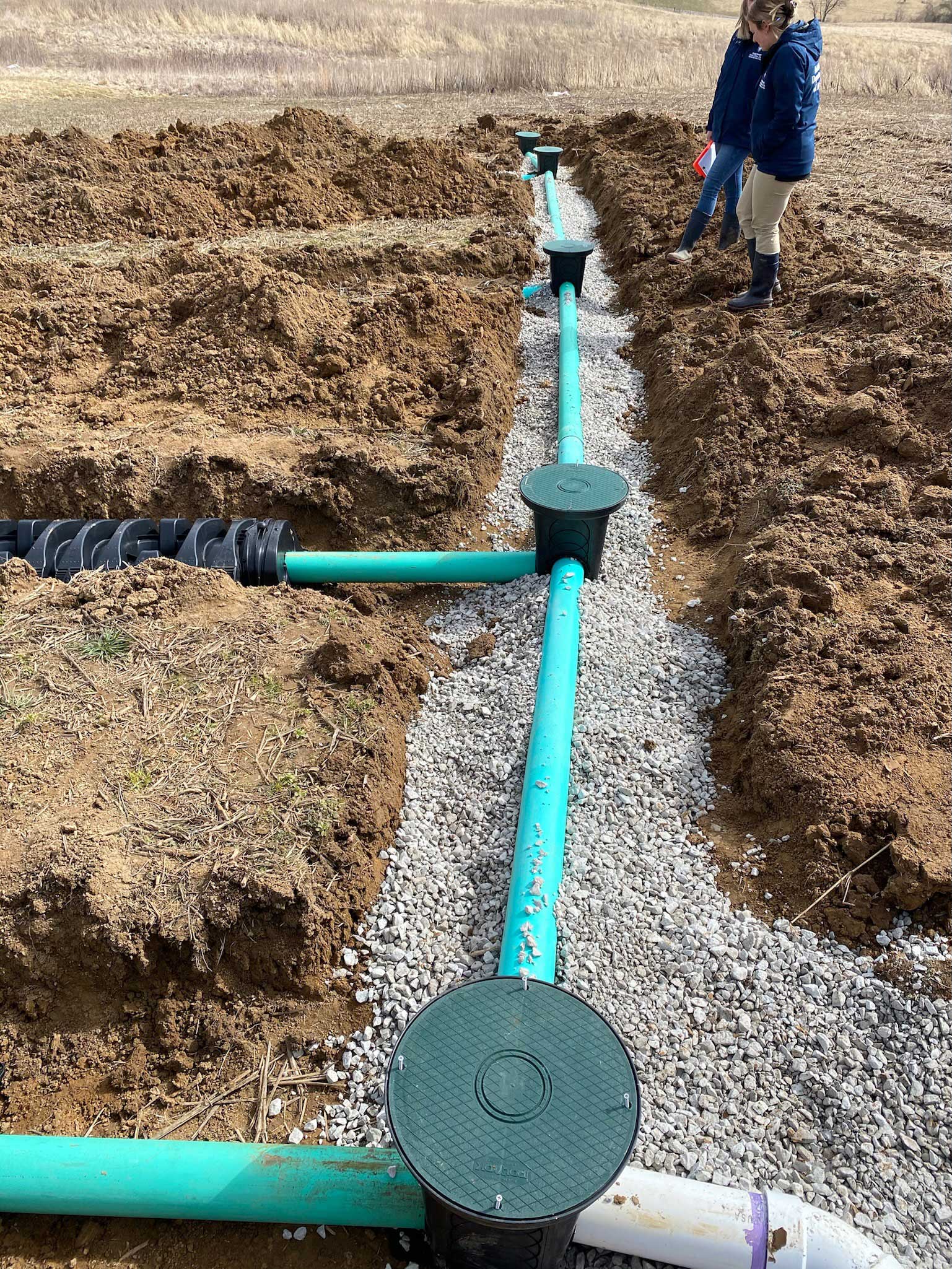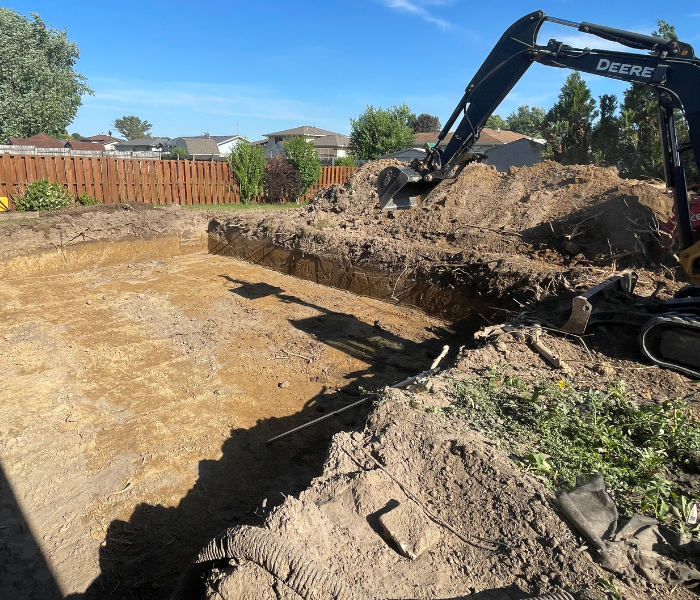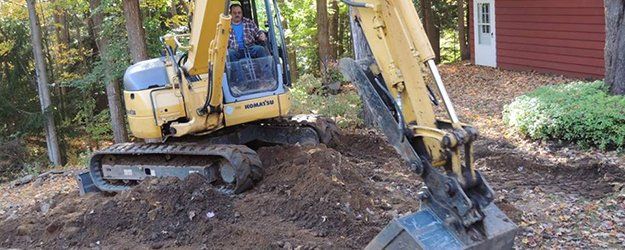Excavating Ohio - Leading Excavation Service Providers for Ohio Projects
Excavating Ohio - Leading Excavation Service Providers for Ohio Projects
Blog Article
Introducing the Art of Excavation: Pro Tips for Safe and Effective Excavating
As soil is transformed and earth is relocated, the complexities of excavation disclose themselves, requiring a keen understanding of tools, dirt structure, safety procedures, and environmental factors to consider. The experience required to browse these aspects properly can suggest the distinction between a successful excavation job and a prospective catastrophe.
Importance of Appropriate Tools
To make sure the safety and performance of any excavation job, utilizing the proper devices is vital. The right tools not only enhance efficiency but additionally alleviate risks connected with excavating. Excavation projects differ in range and intricacy, ranging from tiny domestic landscaping work to large-scale building endeavors. No matter of the job dimension, having the correct tools can make a substantial difference in the outcome.
Excavators are essential pieces of equipment in any excavating operation. These functional devices been available in various sizes to fit different job demands. Mini excavators are perfect for smaller jobs, while bigger excavators tackle extra considerable jobs effectively. Backhoes are one more necessary devices kind, combining the functions of a loader and an excavator in one equipment. They are useful for tasks needing versatility and maneuverability.
Excavators excel in jobs that call for pushing huge quantities of dirt or debris. By spending in the proper equipment, excavation projects can be completed securely, on time, and with precision.
Understanding Dirt Composition
An extensive understanding of soil composition is fundamental for implementing excavation jobs with accuracy and safety and security. Recognizing the various kinds of soil is vital as it directly influences excavation approaches, equipment selection, and general task efficiency. Dirt make-up normally includes 4 main elements: sand, silt, clay, and natural issue. Each part has special buildings that affect just how dirt reacts to excavation processes.
Silt fragments are smaller sized than sand but bigger than clay, using moderate water drainage and cohesion. Organic issue, such as rotting plant material, influences soil fertility and security.
Before commencing excavation, performing soil examinations to determine its make-up and attributes is vital. This information assists in selecting the ideal devices, applying precaution, and establishing excavation techniques customized to the specific dirt conditions - excavating ohio. By recognizing soil make-up, excavation professionals can improve project results while ensuring security and adherence to ideal practices
Precaution and Protocols
Recognizing dirt composition is the foundation whereupon safety and security steps and methods for excavation projects are developed, making sure the health of workers and the success of the venture. There are numerous vital measures that should be carried out to alleviate threats and prevent accidents. when it comes to safety during excavation.
First and primary, before any type of excavating begins, a detailed inspection of the site ought to be carried out to recognize any type of prospective risks such as underground energies, unstable soil conditions, or close-by frameworks that might posture a danger. It is crucial to have a competent person manage the excavation process to make sure that all security procedures are complied with strictly.
In addition, all employees included in the excavation should be correctly trained in risk-free excavating practices and the correct procedure of devices. By adhering to these safety and security actions and methods, excavation jobs can be completed successfully and without occurrence.
Efficient Excavation Planning
When starting an excavation task, precise planning is essential to make certain effectiveness, safety, and effective results. Effective excavation preparation includes numerous crucial steps that are critical for the smooth implementation of the project. The very first step is to conduct a comprehensive site analysis to determine any type of prospective threats, such as underground utilities or unstable soil conditions. This details is vital for developing an in-depth excavation strategy that consists of security actions and risk reduction strategies.
When the website assessment is total, the following action is to create a clear timeline and schedule for the excavation activities. This consists of determining the sequence of tasks, devices needs, and manpower allotment. Appropriate organizing aids stay clear of delays and guarantees that the job remains on track.

In addition, interaction amongst all employee is vital during the planning stage. Clear instructions, normal updates, and reliable control are necessary for an effective excavation job. By spending time and effort in meticulous preparation, excavation groups can dramatically boost efficiency, lessen dangers, and achieve effective end results.

Managing Ecological Considerations
With raising emphasis on ecological sustainability in building techniques, handling ecological considerations has actually become an essential element of excavation tasks. Excavation activities have the possible to impact the surrounding atmosphere through dirt disintegration, sediment overflow, habitat interruption, and contamination of water resources. To minimize these risks, it is important to apply finest practices that focus on ecological protection.

Additionally, proper waste management is crucial to stop dirt and water contamination. Applying treatments for the disposal of dangerous materials, recycling of waste materials, and decreasing using dangerous chemicals can substantially decrease the environmental influence of excavation tasks. By integrating these practices right into excavation preparation and execution, construction firms can guarantee that their projects are not just risk-free and productive but additionally ecologically responsible.
Verdict
Finally, mastering the art of excavation calls for a complete understanding of appropriate tools, soil make-up, security measures, and reliable planning. By adhering to these guidelines and considering ecological factors, excavations can be performed safely and successfully. It is important to prioritize security and performance in every digging task to guarantee effective outcomes.
As dirt is turned and planet is relocated, the complexities of excavation excavating ohio disclose themselves, demanding an eager understanding of equipment, soil make-up, safety procedures, and ecological considerations.To make certain the safety and effectiveness of any kind of excavation project, using the appropriate devices is extremely important.A detailed understanding of dirt make-up is fundamental for executing excavation tasks with accuracy and safety. Understanding the different kinds of dirt is critical as it straight affects excavation techniques, equipment option, and overall project efficiency. By recognizing dirt composition, excavation specialists can boost task outcomes while guaranteeing security and adherence to ideal techniques.
Report this page